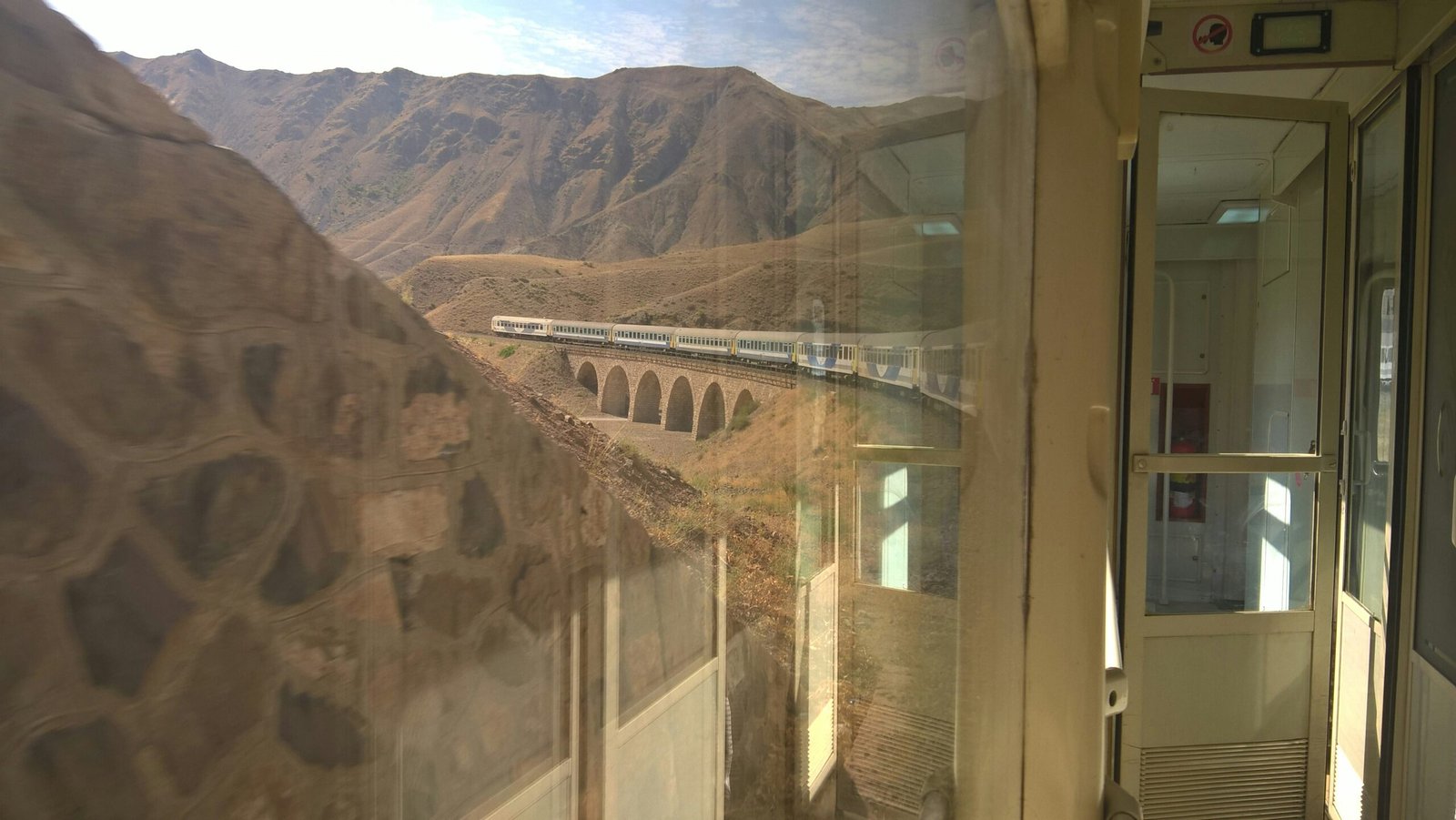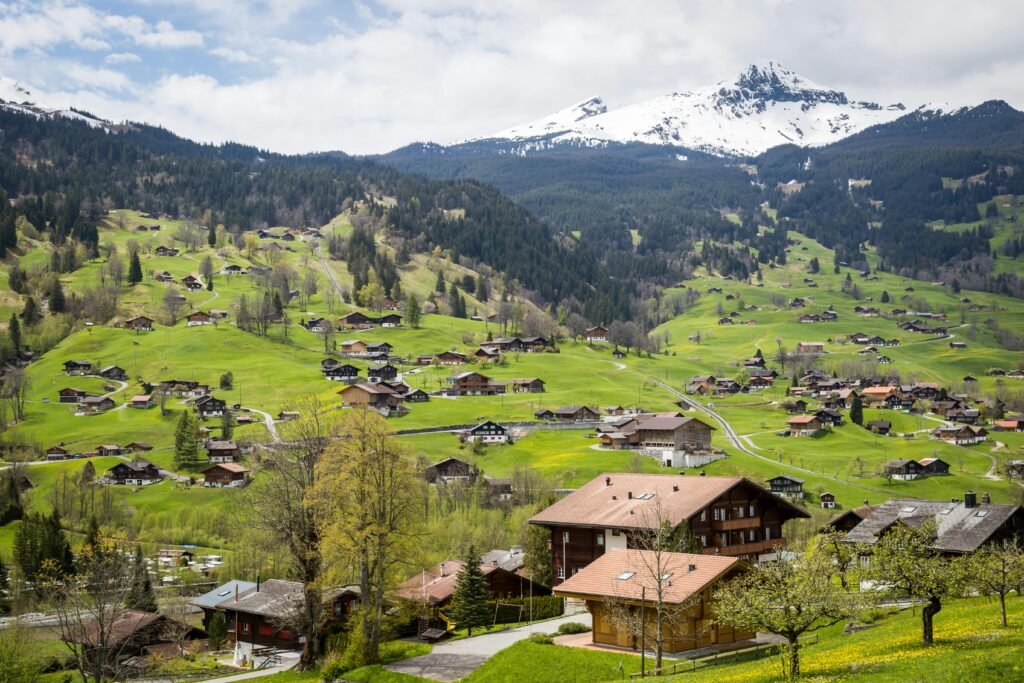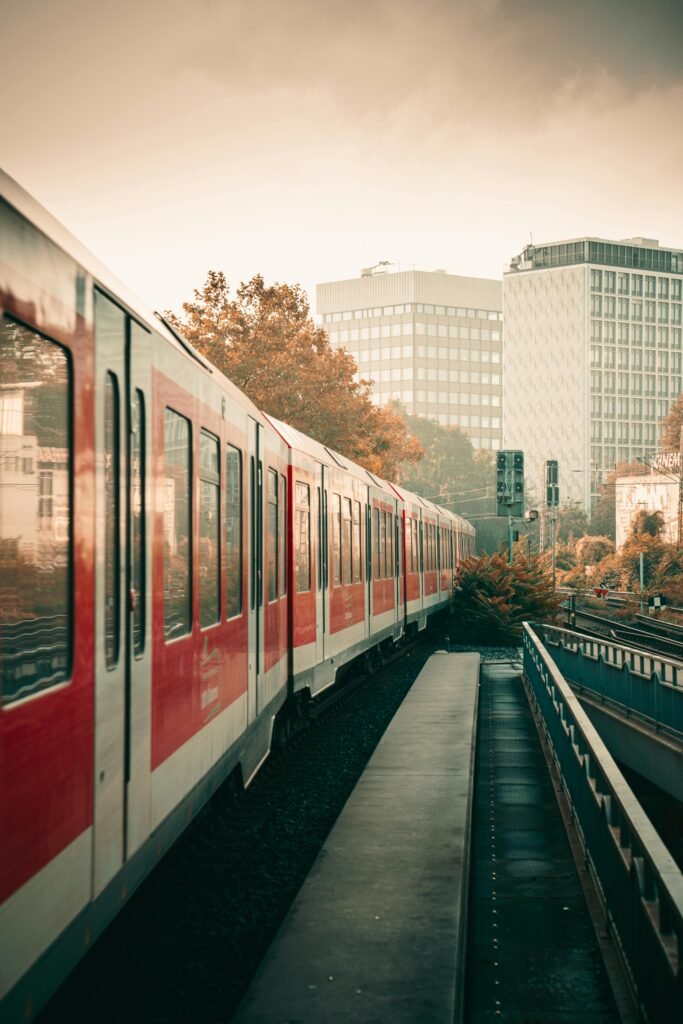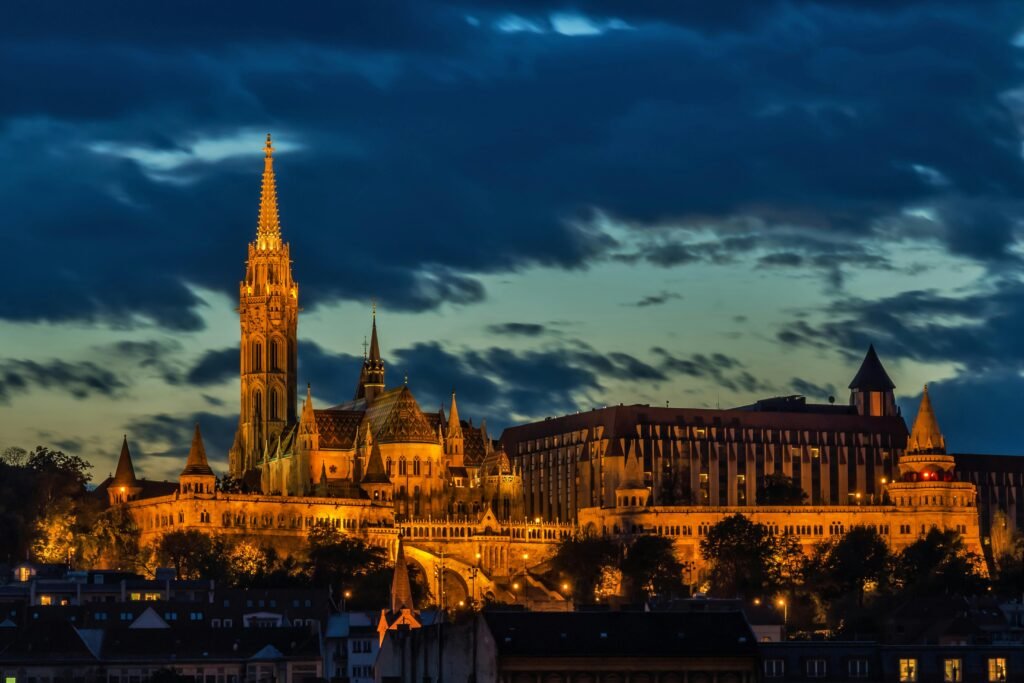Introduction to Train Travel in Europe
Train travel in Europe is widely recognized as a convenient and enjoyable mode of transportation. The continent boasts an extensive and well-connected railway network, making it possible to traverse multiple countries with remarkable ease. The effortless access to various regions encourages both locals and tourists to embrace rail travel as their preferred option for exploring the diverse landscapes and cultures that Europe has to offer.

One of the key advantages of train travel is the comfort it provides. Modern trains are equipped with spacious seating, ample legroom, and onboard amenities that make long journeys more pleasant. Many European train operators prioritize passenger experience, ensuring that their services include Wi-Fi, dining options, and quiet carriages for those seeking respite during their travels. The efficiency of train systems in Europe further enhances their appeal; many journeys operate on time, allowing travelers to plan their itineraries with confidence.
Another noteworthy aspect of choosing trains for travel across Europe is the environmental benefits. Rail transport produces significantly lower carbon emissions compared to cars and airplanes. As sustainability becomes an increasingly important consideration for travelers, opting for trains offers an eco-friendly solution to exploring Europe’s enchanting cities and picturesque countryside.
Travelers can choose from various types of trains that cater to different preferences and budgets. From high-speed trains like the Eurostar and TGV, which significantly reduce travel times between major cities, to regional trains that provide access to smaller towns, there is a suitable option for every journey. Moreover, the scenic views offered through train windows can significantly enhance the travel experience, allowing passengers to appreciate breathtaking landscapes that they might miss when flying or driving.
Overall, train travel in Europe not only facilitates exploration but also promotes a more sustainable and enriching experience for visitors eager to experience the continent’s beauty and charm.
The Eurostar: Connecting Iconic Cities
The Eurostar train service stands out as a premier example of high-speed rail travel in Europe, providing seamless connections between major cities such as London, Paris, and Brussels. This innovative service operates through the Channel Tunnel, commonly referred to as the Chunnel, which enables passengers to experience the unique thrill of traversing beneath the English Channel. Eurostar trains are engineered for speed, allowing for rapid travel times; the journey from London to Paris is approximately two hours and 15 minutes, while the route to Brussels typically takes just under two hours.
Traveling on the Eurostar assures not only speed but also comfort. The trains are equipped with spacious seating, onboard amenities, and panoramic windows, enhancing the overall travel experience. Passengers can choose from various classes of service, ensuring a tailored journey that meets individual preferences, whether one is seeking luxury or budget-friendly options. The Eurostar’s commitment to passenger comfort makes it a favored choice for travelers looking to explore Europe efficiently.
For those planning a Eurostar trip, it is advisable to book tickets in advance, especially during peak travel seasons. This ensures access to the best fares and seat selections. Additionally, Eurostar often offers special promotions, allowing budget-conscious travelers to benefit from reduced pricing. Upon arrival in Paris, visitors should not miss iconic attractions such as the Eiffel Tower, the Louvre Museum, and Montmartre. Meanwhile, Brussels boasts must-see sites, including the historic Grand Place and the Atomium. With efficient travel and vibrant destinations, the Eurostar enhances the Eurotrip experience, making it an essential component of traveling across Europe by train.
Scenic Swiss Journeys: The Glacier Express
The Glacier Express is often heralded as one of the world’s finest train journeys, providing an unparalleled experience of Switzerland’s spectacular scenery. Covering a distance of approximately 290 kilometers, this iconic train route connects Zermatt and St. Moritz, allowing travelers to immerse themselves in the breathtaking landscapes of the Swiss Alps. Throughout the journey, passengers are treated to panoramic views of majestic mountains, lush valleys, and glistening lakes, making it an exceptional option for those passionate about nature and scenic exploration.
Starting from the quaint village of Zermatt, nestled at the foot of the Matterhorn, the Glacier Express sets off on its picturesque voyage. As the train departs, passengers are treated to views of the village’s charming chalets and the towering peaks that surround it. The first leg of the journey offers glimpses of the stunning Gornergrat and the iconic Matterhorn before the train winds through the Upper Rhone Valley. The route is dotted with charming villages and historic landmarks, showcasing Switzerland’s rich cultural heritage.

One of the train’s standout features is its panoramic carriages, designed to maximize the viewing experience. Large, expansive windows allow for unobstructed views of the surrounding landscape, ensuring that passengers do not miss any of the awe-inspiring sites. Additionally, the Glacier Express provides a range of dining options, from light snacks to gourmet meals, which can be enjoyed while taking in the captivating scenery. It is recommended to book your journey in advance, particularly during peak travel season, to secure a spot in the most desirable carriages.
For an unforgettable experience aboard the Glacier Express, travelers are advised to arrive early at the station to settle in and take in the atmosphere before departing. With its combination of comfortable seating, stunning vistas, and exceptional service, this journey truly encapsulates the essence of scenic travel in Switzerland.
Exploring Italy: The Trenitalia Network
Italy’s Trenitalia network serves as a vital component of the country’s transport infrastructure, facilitating seamless travel between its most iconic cities as well as its lesser-known locales. The extensive rail system not only enhances accessibility but also allows travelers to immerse themselves in Italy’s rich cultural tapestry. Among the most popular routes within the Trenitalia network are the journeys from Rome to Florence and Venice to Milan, both of which showcase the convenience and efficiency of train travel in Italy.
The train ride from Rome to Florence typically lasts around 1.5 hours, providing passengers an opportunity to witness the picturesque Tuscan countryside en route. Florence is renowned for its Renaissance art, with attractions such as the Uffizi Gallery and the Florence Cathedral just a short walk from the station. Similarly, the Venice to Milan route, which takes about 2.5 hours, connects travelers to two of Italy’s most vibrant urban centers. Milan, known for its fashion district and the magnificent Duomo, transforms train travel into a culturally enriching experience.
Moreover, the Trenitalia network reaches into less tourist-trodden areas. Smaller towns, like Lucca and Alghero, beckon with their historical charm and local gastronomy. These hidden gems can often be accessed via connecting trains, offering a glimpse into the authentic Italian lifestyle. Travelers can savor traditional dishes like Cacciucco in Livorno or Arancini in Sicily, all while fostering a deeper connection with the region’s culinary heritage.
In essence, Italy’s Trenitalia network epitomizes the notion of travel as an enriching experience, where the journey itself becomes as significant as the destination. With its efficient service and access to culturally significant sites, Trenitalia ensures that both well-known attractions and charming local experiences are readily available for discovery.
The Scenic Routes of Norway: Flåm Railway
The Flåm Railway, a remarkable feat of engineering, is frequently acknowledged as one of the most picturesque train journeys globally. Spanning a mere 20 kilometers, this railway line connects Flåm, situated at the Aurlandsfjord, to Myrdal, perched in the mountains at an impressive altitude. The journey captures the essence of Norway’s dramatic landscapes, featuring stunning vistas of steep mountains, lush valleys, and cascading waterfalls that form an iconic backdrop for travelers.

As the train meanders through the Norwegian fjords, passengers are treated to breathtaking views of notable landmarks such as the Kjosfossen waterfall. The sheer force of the water plunging down the rocky cliffs is a sight to behold and is often accompanied by a traditional Norwegian folk music performance during the summer months. The Flåm Railway not only offers visual spectacles but also provides insightful narratives about the region’s history and heritage throughout the journey.
For those seeking to experience this scenic route, planning is essential. Tickets can be purchased online in advance, especially during peak seasons when demand is highest. The best time to take the Flåm Railway is between late spring and early autumn, typically from May to September, when the landscapes are lush and vibrant. Travelers are advised to check the timetable for seasonal schedules, as rail services may vary depending on weather conditions.
In addition to the railway journey, visitors to Flåm can explore several nearby attractions. The Aurlandsfjord offers opportunities for kayaking and boat tours, while the picturesque village of Flåm itself has quaint shops and cafes that celebrate local culture and cuisine. A trek along the Røyndalen valley or a visit to the Stegastein viewpoint will further enhance an unforgettable Norwegian adventure. The Flåm Railway indeed stands as a must-do experience for anyone looking to explore Norway’s enchanting landscapes.
Unlocking Spain: Renfe High-Speed Train System
Spain’s efficient Renfe high-speed train system offers one of the most reliable and comfortable ways to explore the country’s vibrant cities. The AVE (Alta Velocidad Española) trains connect major urban hubs such as Madrid, Barcelona, Seville, and Valencia, allowing travelers to traverse the country with remarkable speed and ease. With well-maintained infrastructure and modern amenities, Renfe not only enhances the travel experience but also enables passengers to soak in the stunning landscapes as they zip from one destination to another.
Traveling from Madrid to Barcelona, for instance, takes approximately 2.5 hours on the AVE, compared to a 1.5-hour flight when considering airport transfers and security checks. In this regard, the Renfe system serves as an excellent alternative, offering a more seamless journey. Passengers can enjoy spacious seating, onboard dining options, and free Wi-Fi, all of which create a pleasant atmosphere for relaxing or working while en route.
In addition to convenience, the Renfe high-speed train system provides easy access to cultural highlights across Spain. For instance, after reaching Seville, travelers can explore the iconic Alcazar Palace or savor authentic tapas in the bustling Santa Cruz neighborhood. Similarly, a quick trip from Barcelona to Valencia opens up opportunities to relax on the city’s beaches or visit the renowned City of Arts and Sciences.
To maximize savings, it is advisable to book tickets in advance, as prices decrease with early reservations. Furthermore, travelers can benefit from various discount cards intended for frequent users and families. In contrast to domestic flights, the Renfe system proves to be not only eco-friendly but also a time-efficient and cost-effective means of navigating Spain’s rich cultural landscape.
The Magic of Eastern Europe: Train Routes in Hungary and Beyond
Eastern Europe is often overshadowed by its Western counterparts, yet it offers a myriad of unique experiences for travelers, particularly when explored by train. Hungary, a country known for its rich history and stunning landscapes, boasts an extensive and efficient train service that facilitates a deep dive into its charming locations. One of the most captivating train journeys in Hungary is from Budapest to Lake Balaton, referred to as the “Hungarian Sea.” This scenic route offers travelers spectacular views of the countryside, dotted with quaint villages and vineyards, making it a perfect getaway destination.

The train ride, which typically takes around two hours, often attracts both locals and tourists seeking a refreshing escape from the bustling city. Upon arrival at Lake Balaton, visitors can indulge in a variety of activities, from swimming in the lake’s warm waters to exploring the picturesque towns of Tihany and Balatonfüred. These towns are famous for their beautiful landscapes and rich cultural heritage, which include ancient monasteries and lavish villas.
Beyond Hungary, the region’s train network becomes even more fascinating. Connections to neighboring countries like Austria and Slovakia provide an excellent opportunity for cross-border adventures. For instance, a short train ride from Budapest can take you to Vienna or Bratislava, cities rich in history and architectural beauty. Each journey offers a unique experience of exploring local cultures and hidden gems, setting the stage for enriching encounters.
Traveling by train in Eastern Europe not only allows for a more relaxed pace but also presents an authentic way to experience the region’s vibrancy. For adventurous travelers seeking routes off the conventional path, the train journeys across Hungary and into neighboring destinations promise unforgettable memories, scenic views, and a glimpse into the everyday life of Eastern European communities.
Planning Your Eurotrip: Tips and Tricks
Planning a Eurotrip can be an exhilarating yet daunting task, especially when navigating the extensive railway network that connects many of Europe’s most cherished destinations. An efficient strategy begins with crafting an ideal itinerary. Start by selecting key cities you wish to visit, considering travel times and connections between them. A map can be an invaluable tool for visualizing the geography of your journey and plotting the most logical route to minimize travel time and maximize exploration.
Once your itinerary is in place, researching the different train passes is essential. The Eurail Pass, for example, offers flexible travel options across numerous countries, which can save you both time and money. Determine how many travel days you’ll need and compare the benefits of various passes to find the one that aligns best with your travel plans. It’s also wise to look into booking individual train tickets for certain routes, especially for high-speed trains that require seat reservations.
Understanding the European train schedule is key to effective travel planning. Allocate time to familiarize yourself with train timetables and platforms, which can often be found on the official railway websites or renowned travel apps. Remember that train schedules can vary by season; hence, checking for updates closer to your travel date is advisable. Pack wisely as well, focusing on essentials that will make train journeys comfortable. Consider bringing a lightweight bag, travel snacks, a refillable water bottle, and entertainment options for longer rides.
Navigating train stations is another crucial aspect of your Eurotrip. Larger stations may have multiple levels and numerous platforms, so arriving early ensures you can locate your train and settle in without stress. Language barriers may arise, so having a translation app can facilitate smooth interactions. With thoughtful planning, your Eurotrip by train can be a seamless and enriching experience, allowing for unforgettable adventures across Europe.
Conclusion: Embracing the Train Travel Experience
Traveling across Europe by train offers a myriad of advantages that greatly enrich the overall experience. The seamless connection between cities, regions, and countries allows for immersive exploration of the continent’s diverse cultures, histories, and landscapes. One of the key benefits of choosing train travel is the ability to witness—and appreciate—the scenic beauty that unfolds outside the window. From rolling hills adorned with vineyards to majestic mountains and picturesque villages, each journey can be a visual feast that captures the essence of European charm.
Furthermore, trains provide a level of convenience that is unmatched by other forms of transportation. With extensive rail networks connecting major urban centers and remote destinations, travelers can easily access a plethora of sights without the stress of navigating through traffic or enduring long security lines, as seen in air travel. Additionally, the comfort of spacious seating, dining cars, and the opportunity to move freely during journeys enhances the travel experience, allowing individuals to relax and savor their adventure.
Moreover, the cultural immersion that comes with train travel cannot be overstated. Passengers have the unique opportunity to engage with locals, share stories, and gain insights into the traditions and lifestyles of different regions. This personal interaction often leads to cherished memories and a deeper understanding of the places visited. As train stations often serve as historical hubs, they provide a glimpse into the architectural styles and local nuances that characterize each city.
Overall, embracing the train travel experience is not just about reaching a destination; it’s about the journey itself. By considering the train as a preferable mode of exploring Europe, travelers can embark on an adventure filled with scenic vistas, cultural richness, and unprecedented convenience. This method of travel invites passengers to truly engage with the landscape of Europe, thus enriching their journey and creating lasting impressions of their adventures.





